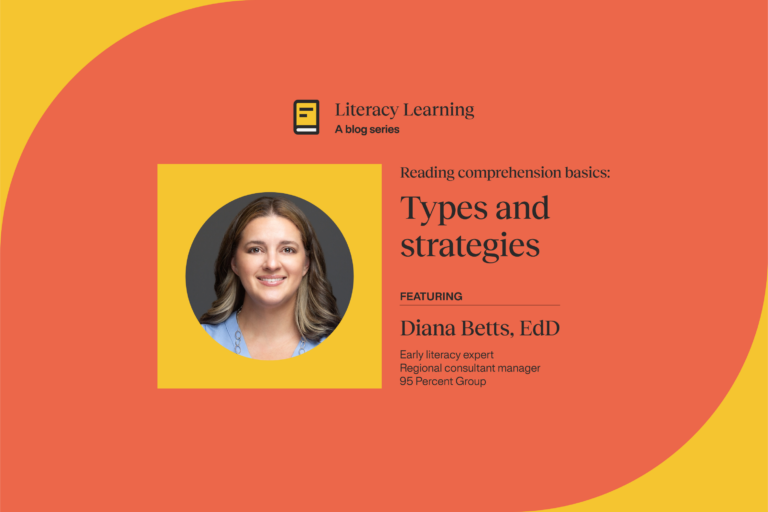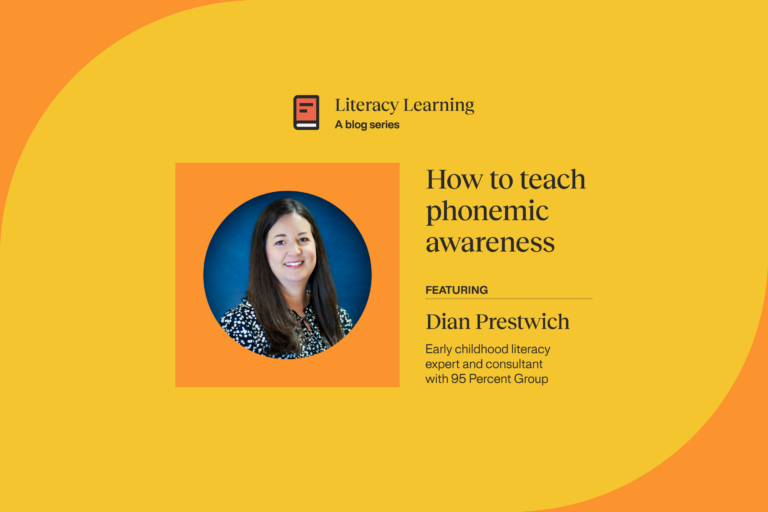Leverage funding, gain ROI for your literacy investments (Part 2)
This two-part editorial series is designed to help educators maximize their funding and make the most out of their Tier 1, 2, and 3 literacy programs this year. A child’s learning time is too precious to squander. Read on, and we’ll show you how to make the most of their time and your time—and get the ROI you’re looking for in your phonics investment.

Get Tier 2 and 3 right from the start…
And achieve literacy success for all your students
Tier 2 and Tier 3 are expensive forms of instructional delivery. To ensure success from the start in Tier 2 and 3 interventions, you have to implement evidence-based, explicit, systematic, and cumulative reading intervention solutions, and you need to be precise, exact, and efficient.
How?
Typically, teachers will have students who have been flagged on a universal screener—but that information is broad and shallow. They know their students are below benchmark but they don’t have the specifics they need. Then the teacher gets a precious 30 minutes of instructional time on average…40 minutes is remarkable. They have a very small amount of extra time to make a big difference. Ideally, they need to know exactly what their individual students require to take advantage of that time.
1. The first step is precise and detailed assessment.
The 95 Phonics Screener for Intervention™ (PSI™) is a short, easy-to-administer informal diagnostic assessment designed to pinpoint the specific decoding needs of students who have poor reading accuracy. Schools use the PSI to determine where to begin each student’s intervention, to group students with similar needs, and to determine when to move students out of one skill into another. Information from the PSI eliminates guessing and leads directly to placement in a Tier 2 or Tier 3 group for focused intervention instruction on skills the diagnostic identifies need work.
2. Implement evidence-aligned instruction that is targeted and specific.
Students requiring Tier 2 intervention need additional doses of strategic instruction in one or more specific areas to address targeted gaps in their phonics skills. 95 Phonics Lesson Library® (95 PLL®) is designed primarily for Tier 2 phonics intervention. It is evidence-based (including the most recent study in Val Verde, California, where intervention students using the PLL showed higher gains on the CORE Phonics Survey and Acadience Reading than the comparison group in first grade on multiple measures) and aligned with science of reading research. PLL enables teachers to deliver this instruction explicitly and systematically to small groups and see strong results. Additionally, the PLL can be used to provide Tier 3 instruction and/or supplemental phonics lessons during Core instruction.
3. Be nimble and pivot quickly—monitor progress every three weeks.
Regular, close progress monitoring lets teachers know the moment they need to shift something in their instruction. With evidence-aligned instruction and progress monitoring, we know that 95 percent of all students can achieve reading proficiency.
Principal Jo. Anna Grant talked about their progress monitoring at Bailey Elementary School as a game changer:
“When I first got to Bailey Elementary, we had a lot of kids who were considered to be in Tier 2 and Tier 3. Unfortunately, everybody was using different interventions. It was really important for me to have some consistency across Tier 2 and Tier 3 delivery. We purchased the 95 PSI screener and the 95 Phonics Lesson Library with strategic and carry-over funding.
One of my biggest selling points was the ease of use. Teachers can very easily administer the PSI and know exactly what lesson they go to in the 95 Phonics Lesson Library. We exited 27 students from RTI last year and that had never happened at Bailey. It’s been a game changer and the teachers have bought in; they believe in the program. When we administer the PSI, we know what our kids are struggling with and we know where to place them.
I love this program! It helps me close gaps that were huge before. We have kids that were in the red when we benchmarked them and now they’re reading on grade level. It’s powerful and it works. I want that for all my kids.”
4. Ensure a Return on Investment for every child.
We can’t squander a child’s learning time. We pay close attention to ROI at a district level. We need to pay as much attention to ROI for making the most of a child’s reading instruction and getting it right at every step.
In years one and two of the pandemic, educational leaders and teachers across the country were intensely motivated to preserve life. They took immediate action, committing funds to new HVAC systems, plexiglass barriers, hand sanitizer, internet expansion, online learning platforms, and hybrid delivery of classes.
Now, in this final year of this particular and unique influx of funding for an extraordinary crisis, we need to make sure we address the literacy crisis that has been lingering and growing for years—a crisis that has been exacerbated by the pandemic, as evidenced in the September 2022 NAEP report.
A recent Atlanta Journal Constitution post by Ty Tagami reports on what one school district in Georgia, a 95 Percent Group partner, did with relief funds:
Fulton County, with nearly 90,000 students, budgeted $90 million for a new literacy initiative. The money is paying for teacher training and the hiring of enough literacy coaches to staff every elementary school. It came from one-time federal pandemic relief funds.

A prescriptive, systematic, rigorous, and explicit phonics program. That’s our game changer. That’s 95 Percent Group.
Jennifer Burton
Learn more, register for our on-demand webinar!
Part 1 in the series covers tips to maximize your ROI for intervention and realize student gains. Read it now.
You’ve screened your students and have beginning-of-year reading data showing skill deficits. Wondering what’s the best instructional approach to close those gaps? We can help! If you missed our webinar: “I have beginning-of-year reading data. Now what?” you can register now to view it on demand: I have beginning of the year data. Now what? Also view our evidence-based Tier 2 and Tier 3 products.



